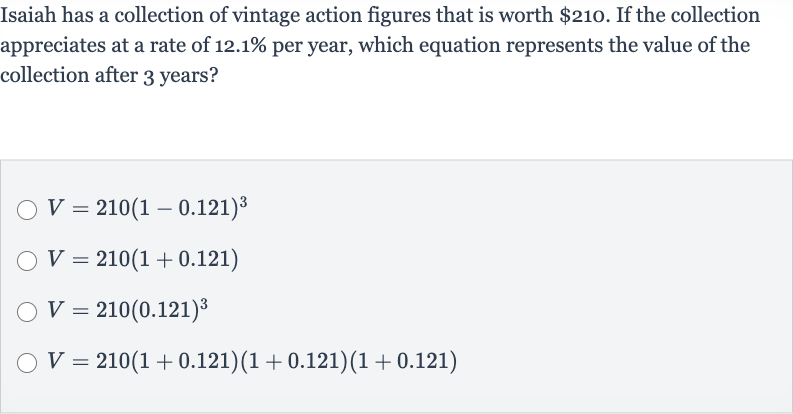Full solution
Q. Isaiah has a collection of vintage action figures that is worth . If the collection appreciates at a rate of per year, which equation represents the value of the collection after years?
- Identify Values: We need to find the equation that correctly calculates the value of the collection after years with an appreciation rate of per year. The general formula for compound interest (which is similar to appreciation) is , where is the future value, is the initial principal balance, is the rate of interest per period, and is the number of periods.
- Substitute Values: Let's identify the values from the problem:Initial value = Annual appreciation rate = = (as a decimal)Number of years = Now we can substitute these values into the formula.
- Check Given Options: Substitute the values into the formula: This equation represents the value of the collection after years, taking into account the annual appreciation.
- Final Equation: Now let's check the given options to see which one matches our equation: - This is incorrect because it subtracts the rate instead of adding it. - This is incorrect because it does not account for compounding over years. - This is incorrect because it only raises the rate to the power of , not the entire term . - This is the expanded form of our correct equation and is equivalent to .

